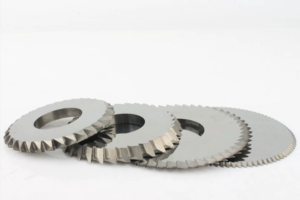Table des matières
BasculerStandard Solid Carbide Saw Blades
In the world of manufacturing and woodworking, the tools you choose can make a significant difference between success and failure. One of the most critical components in ensuring clean, precise cuts is the saw blade. Among various types available on the market, **standard solid carbide saw blades** stand out for their exceptional performance and durability. This article explores how these specialized blades can enhance precision and longevity in cutting applications, ensuring that customers receive the best value for their investment.
Unmatched Precision in Cutting
Precision is a term that holds significant weight in any cutting application. Whether you’re cutting hardwood for fine furniture or crafting metal components for machinery, the accuracy of your cut can profoundly impact the final product. **Standard solid carbide saw blades** are engineered with high precision, which allows them to produce clean, smooth cuts with minimal chipping or tear-out.
For instance, when a craftsman uses these blades to cut through dense hardwoods like oak or cherry, the results are remarkable. The sharpness and quality of solid carbide allow for intricate designs and detailed work, such as dovetail joints or ornate carvings, that require the utmost accuracy. This level of precision not only enhances the aesthetic appeal of the finished product but also reduces the need for costly rework, saving time and resources in the process.
Durabilité améliorée
Durability is another key consideration when selecting cutting tools. Traditional blades, often made from high-speed steel, may wear down or become damaged quickly, especially when used on tougher materials. In contrast, **standard solid carbide saw blades** are renowned for their toughness and longevity, allowing them to withstand heavier use without compromising cutting performance.
Take, for example, industrial applications where metal materials such as aluminum or stainless steel need to be cut regularly. Solid carbide blades can endure the heat and stress generated during prolonged cutting sessions. Unlike their high-speed steel counterparts, which may require frequent sharpening or replacement, these blades maintain their sharpness for much longer, resulting in increased productivity. This durability means fewer interruptions for maintenance and less time spent on blade replacement, making it a wise investment for any business.
Applications polyvalentes
One of the key selling points of **standard solid carbide saw blades** is their versatility across various industries. These blades are suitable for a wide range of materials, including wood, plastic, metal, and composites, making them a one-stop solution for many cutting needs.
For example, in the woodworking sector, a solid carbide blade can effortlessly cut through softwood, hardwood, and engineered wood products like plywood or MDF. This versatility enables woodworkers to tackle diverse projects without switching tools, which can significantly streamline operations.
In metalworking, the ability of solid carbide blades to deliver consistent results when cutting through different types of metals adds to their appeal. Machinists often rely on these blades to ensure precision cuts in high-density materials, resulting in components that meet tight tolerances essential for equipment assembly.
Rentabilité dans le temps
While **standard solid carbide saw blades** may have a higher upfront cost compared to standard steel blades, their performance can lead to significant long-term savings. Their extended life means that fewer replacements are needed, and their ability to maintain sharpness reduces the frequency of resharpening.
For instance, a manufacturer may invest in a solid carbide blade that costs more than a traditional blade. However, if that blade lasts three times longer and requires 50% fewer sharpenings, the overall cost-effectiveness is clear. This economic advantage makes solid carbide blades a sensible choice for businesses looking to optimize their budgets while maintaining high standards of quality in their work.
User-Friendly Considerations
The breath of capabilities that **standard solid carbide saw blades** offer makes them a preferred choice for both seasoned professionals and hobbyists alike. Their design allows for easy handling and quick setups, making them user-friendly. Crafting projects or managing industrial tasks becomes less cumbersome with these blades, allowing users to focus on achieving high-quality results rather than struggling with their tools.
Furthermore, the design of solid carbide blades often emphasizes improved chip clearance and reduced friction, facilitating smoother cuts. This ease of use can significantly enhance the overall efficiency of cutting operations, whether in a high-volume production environment or a small workshop.
Conclusion
In summary, **standard solid carbide saw blades** are an integral part of effective cutting applications across multiple industries. Their remarkable precision, exceptional durability, versatility in applications, cost-effectiveness, and user-friendly attributes make them a compelling choice for both professionals and DIY enthusiasts. By investing in these high-quality blades, customers can ensure they achieve superior results while also maximizing efficiency and minimizing costs. As the cutting tool landscape continues to evolve, choosing the right blade remains crucial, and solid carbide options are leading the way in modern cutting solutions.
When considering your next cutting tool purchase, remember the benefits of **standard solid carbide saw blades** and how they can elevate your work to new heights.
